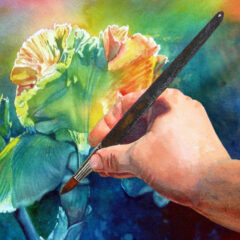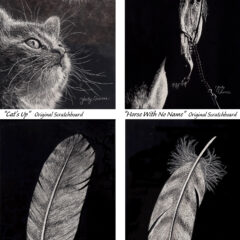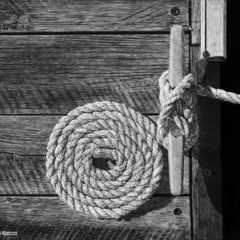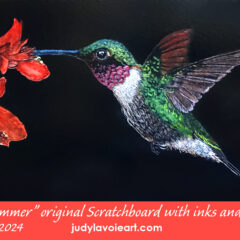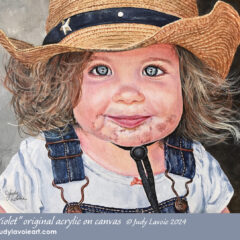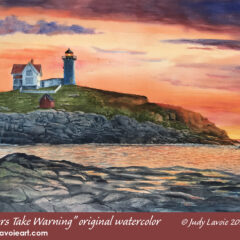Creating art is often a solitary experience. Why not try a group art workshop? Workshops can truly benefit you as an artist, if chosen carefully. They can:
- improve and/or increase your artistic skills
- give you exposure to new techniques
- create excitement about different methods and materials
- motivate you to create
- allow you to learn from your peers
- inspire new directions
- increase your confidence
- provide a terrific social experience
On the flip side, it is quite possible to totally waste your time and money on a workshop which is inappropriate for you. Beware of selecting one with:
- a skill level mismatched to your ability
- media which doesn’t suit you
- an instructor who clashes with your style, personality, or needs
- subject matter incompatible to your art endeavors
- a format which makes you uneasy, nervous, stressed
- an over-ambitious agenda
- travel to a place where you are uncomfortable
- a bigger budget than you are prepared to spend
For years, art workshops have been held in popular vacation destinations, exotic foreign locations, beautiful areas all around our country, on cruise ships, and at places near where you live. These days, especially with current restrictions due to the coronavirus pandemic, many are also going online, with their own unique advantages vs. live and in-person. Art stores, like my local favorite Jerry’s Artarama in Knoxville, and manufacturers of art materials often offer free demos and lessons, some providing the materials for your use during the session. Art Schools (like Arrowmont in Gatlinburg TN), mail order art suppliers (like Cheap Joe’s Art Stuff), art organizations, publishers and others provide art workshops for all ability levels, for a variety of arts, with instructors from all over the world. The choices can be overwhelming.
 Here are a few tips to help maximize the likelihood that your workshop selection will result in a positive experience for you as an artist:
Here are a few tips to help maximize the likelihood that your workshop selection will result in a positive experience for you as an artist:
1) Determine how much you want to (or can) spend
Costs can range from free to thousands of dollars. Consider these items:
- Workshop Fee – Look at the two sample workshops I grabbed from the internet; of course the fees include different things, but the one in Oregon costs $655 and the one in Spain costs $3,390. There is an enormous range of costs for a workshop, so shop within your budget, and look for discounts. If an art organization is the workshop sponsor, there is often a reduced fee for members. The difference might make it worthwhile to join, with member perks in addition to the lower workshop price (newsletters, member shows, live demos at meetings). You might find relatively low prices offered by local education facilities, such as the 6-week beginner class I took at a nearby vocational school with a local professional artist which got me hooked on watercolors way back in 1980. Also look for early registration discounts and don’t forget to confirm cancellation policies before you register.
- Travel, lodging, meals – Workshops close to home can save you on lodging and meals; sharing a motel room with a friend can reduce costs; staying with someone you know nearby might be a possibility. Read the fine print and see what the fees include.
- Materials Required – This can be a big budget item, surprisingly. Some workshop supply lists are very long and specific, especially if you are a beginner and need to buy everything new. These items can add up quickly, and you might end up with barely used art supplies which you never want to use again. After years of painting in watercolors, I had to buy many of the materials required for a watercolor workshop I recently signed up for, including a specific brand and weight of paper and certain paint colors. Check with artist friends for listed items you might be able to borrow, such as a specific type of palette or a board for mounting your paper… or supplies they bought and never used! Note to self: don’t buy your materials too far in advance of the workshop dates – one workshop I registered for a few years ago was cancelled when it didn’t reach the minimum number of attendees, and another scheduled for June 2020 was cancelled due to the coronavirus (hopefully it will be rescheduled)… both after I had gathered or purchased every item on the supply list!

2) Choose the type of workshop best for you
- What’s the agenda? Pick a medium you are using and want to improve OR choose something totally new and different which you are anxious to learn. I’ve taken several watercolor workshops over the years, but now that I am using scratchboards I would love a chance to learn from an experienced scratchboard teacher in a workshop setting.
- Investigate the painting style you’ll be learning; it might match yours and help you advance. Or it could be a new direction for your work or help you think outside the box. I read a review of a workshop from an attendee who stated: “Generally, I paint loose and fast. Working in a slow and methodical manner is, well, not me. That is why I chose to take John’s class. Stepping out of my comfort zone would be a learning experience.” There is nothing wrong with a landscape painter taking a portrait workshop or a studio painting taking a plein air class. Perhaps you love to paint but never learned how to draw, or enjoy working in acrylics but never worked with just a palette knife. You might benefit from a workshop on composition or color theory, with application to a multitude of painting mediums. Try mixed media, collage, experimental techniques, new surfaces. A workshop can speed up your learning curve, take the fear out of trying something new, and quickly improve your artistic talents.
- Check the workshop format to be sure it is comfortable for you. Does it include watching the teacher do demos, one-on-one guidance, critiques of student work, using the instructor’s references rather than your own? Do you need to do prep work at home to bring to the workshop? How much work are you expected to complete? Is there time for you to paint on your own, do you all break for lunch? Are snacks and/or meals provided? Is there free time for other activities, like touring an art museum in the area? Online workshops can be more flexible, allowing you to work at your own pace and/or providing videos which you can review over and over before proceeding to the next step. Know what you are getting into!
3) Identify your own skill level and be sure to match that to the workshop.
You could experience days of frustration and wasted time and money if you are a beginner in an advanced class or visa-versa. Here is how Cheap Joe’s describes levels for their numerous art workshops:
Level 1: Beginner – Covers the very basic techniques of the medium at a slower pace and offers a lot of individual help for all students. No prior experience in the medium is expected of the student.
Level 2: Beginner-Intermediate – Reviews basic techniques for beginners as needed, and offers practice exercises at an average pace to assist in gaining confidence and experience with the medium. Assistance is given to all.
Level 3: Intermediate – Assumes the student already has a basic knowledge of the medium. Average pace with individual help for all students.
Level 4: Intermediate-Advanced – Average pace with individual help for those who need it, yet challenging for the more experienced or advanced student.
Level 5: Advanced – Fast-paced and challenging exercises, with little teacher assistance.
4) Research the instructor
Do you like the instructor’s art? The workshop might not be designed to teach his/her particular style of painting, but you should minimally find the artist’s work appealing.
- The first professional artist demo I saw was by Florida artist Jean Grastorf demonstrating her method of pouring watercolors, at the first Jacksonville Watercolor Society meeting I attended in 1994. I was so impressed by her method, her lesson, and her artwork that I decided to try it myself. I created “Ponce’s Lion” and it became the first painting I had accepted into a major show, the 1994

“The Moody Matador” © Joe McFadden Florida Watercolor Society (FWS) annual exhibition. I went on to use Jean’s method for many other paintings and eventually created another show winner “Nana’s Rocker” (Pictured at the beginning of this post) which won an award in the 1996 FWS exhibition and won Best of Show in the Jacksonville Watercolor Society’s annual exhibit in 1997. When Jean wrote a book on her techniques, she included my painting! Another note to self: do more pouring.
- I took a 3-day workshop in 1997 by the late Florida artist Joe McFadden, whose own work at the time focused on a series of whimsical imaginery “pencil-neck” portraits, like the one shown here. Lovely technique and execution, but totally unlike anything I might ever consider doing. His workshop was aimed at how to use color and limited palettes, so his art style never really entered the equation. What I learned at the workshop was invaluable to my future artwork – I’ve employed limited palettes over and over, in both watercolors and acrylics.
- What are the instructor’s credentials? Are they authors, art award winners, seasoned workshop presenters?
- Do you know anyone who has studied with this person who can give you a review?
- Preview videos on his/her website (or YouTube or Vimeo) if available, so you can glimpse the instructor’s teaching style. Is it easy to understand, moving at a pace you can follow, giving a depth of explanation which interests you, presenting information in an entertaining and interesting manner? If English is his/her second language, can you easily understand what is being said?
- An artist who does many workshops may have student testimonials that could be insightful, although likely they are selectively chosen to be positive.
5) How long is the workshop?
Even while you are having fun, workshops can be intense and even tiring. Consider your attention span, your energy level. Lessons can range from a few hours to many days. Add on time for required traveling too. If you are a working person, you might not be able to take a week off to attend a workshop, but could do one night a week for two months. That’s how I took a pastel workshop years back, traveling over an hour each way with a friend who took another art class on the same schedule as mine. Or perhaps every consecutive Tuesday afternoon for 4 weeks works best for you…?
Armed with this info, start shopping for a workshop to light a spark in your art!

